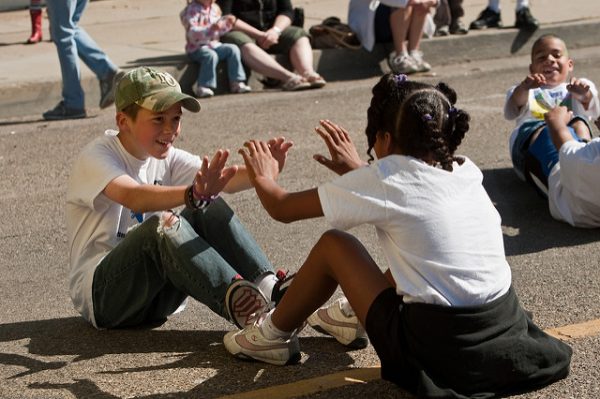
The recent treatment of superstar tennis player Serena Williams provides plenty for discussions of discrimination against women of color in sports and more broadly, in public. Even before this most recent incident involving her technical violations for supposedly “aggressive” behavior against the match’s umpire, Williams received a violation in the French Open for her black athletic catsuit, despite numerous instances of white players sporting similar wear at the French Open in prior years. Serena Williams’ experience is not only familiar to adult women of color, but also to girls of color. Social science research highlights how enduring patterns of policing and regulating racial minorities begins at an early age — often within educational institutions
Schools have long served as sites for social control and discipline that hinder the educational attainment of minority youth. Girls of color experience a unique set of institutional discriminatory practices that are coded in both racialized and gendered controlling images. All too often, these images depict girls of color as overly aggressive, hypersexual, and too adult-like. One two-year ethnographic study showed that while some teachers appreciated Black girls’ assertiveness in the classroom, by and large, teachers and administrators discouraged Black girls from talking in “loud” or aggressive manners, especially when such behaviors threatened teachers’ authority. They attempted to incentive Black girls into more quiet and docile behavior in order to achieve status as young “ladies” — a status shrouded in ideals of white female innocence.
- Kelly Welch and Allison Ann Payne. 2018. “Latino/a Student Threat and School Disciplinary Policies and Practices.” Sociology of Education 91(2): 91–110.
- Edward W. Morris. 2007. “‘Ladies’ or ‘Loudies’?: Perceptions and Experiences of Black Girls in Classrooms.” Youth & Society 38(4): 490–515.
Dress code enforcement serves as one of the primary ways educational institutions police girls of color. In one study, girls were told, “Don’t come in here with no hoochie-mama dress all tight up on your butt!” Similar remarks demanded that girls “Close [their] legs” and act like ladies. At times, girls resisted these policies and the racialized and gendered stereotypes that emerged alongside them. Still, girls also participated in the regulation of their female peers’ clothing by degrading those who wore “sleazy clothes.” Such policies and practices reinforce educational institutions as sites that perpetually reproduce simultaneous race, gender, sexuality, and class inequalities.
- Rebecca Raby. 2010. “‘Tank Tops Are Ok but I Don’t Want to See Her Thong:’ Girls’ Engagements With Secondary School Dress Codes.” Youth & Society 41(3): 333-356.
- Edward Morris. 2005. “‘Tuck in That Shirt!’ Race, Class, Gender, and Discipline in an Urban School.” Sociological Perspectives 48(1): 25-48.

Comments